
|
|
|
|
|
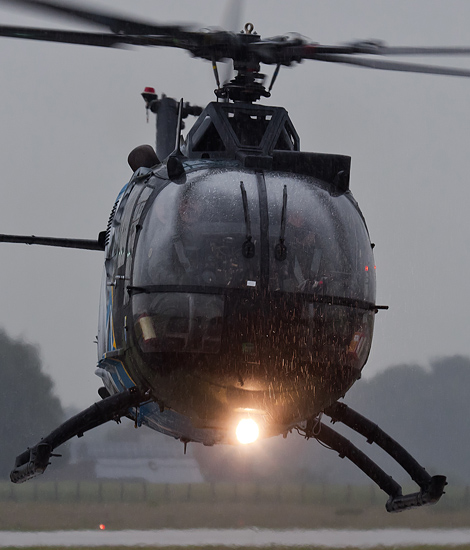
|
30 Years Boeing E-3A Sentry; Geilenkirchen, June 15, 2012
Airborne Warning And Control System; Text and Photograph's by Alex van Noye
The E-3A Sentry, also known as the AWACS (Airborne Warning And Control System), is 30 years in service within the NATO.
An open house is organized at Geilenkirchen to celebrate this event on June 16, and June 17, 2012. I was present at the
spotter day during the arrival of the aircraft for this small open house.
This year marks the celebration of the 30th anniversary of the E-3 component at Geilenkirchen Air Base. Geilenkirchen Air
Base is the home base of the NATO E-3 Sentry fleet. The base is located in Germany near the Dutch border in the southern
part of the county of Limburg. The base was commissioned in 1953 by the Royal Air Force as RAF Geilenkirchen. Several
RAF squadrons operated from this base from 1953 until 1968. In 1968, the flying activities stopped and the base was
transferred to the German Luftwaffe. In August of the same year it became the home base of several German surface-to-air
missile units. The NATO decided to start the Airborne Early Warning & Control Force program and Geilenkirchen was to become
the home base of the E-3A fleet. The first E-3 Sentry arrived at Geilenkirchen in February 1982. The German government handed
the base officially over to NATO as a Main Operating Base (MOB) on March 31, 1982. The E-3 Component was officially
established on June 28, 1982. The full operational capability was achieved at the end of 1988. In total, 18 NATO E-3A
Sentry (AWACS) aircraft were purchased. Only one aircraft was lost over a period of 30 years; the plane crashed in Greece
in July 1996. A total of 4 squadrons were stationed at Geilenkirchen Air Base. These units, are; Squadron 1, Squadron 2,
Squadron 3 and Squadron 4 Training Wing. The first 3 squadrons are all equipped with the Boeing E-3A Sentry. The 4th
training squadron has recently been abandoned. The Squadron 4 Training Wing was previously equipped with the CT-49A
(Boeing 707 TCA). These aircraft have been phased out. All the aircraft at Geilenkirchen are registered as aircraft
from Luxembourg. Luxembourg was chosen because this country has no air force which makes the registration a neutral
appearance.
The Boeing E-3 Sentry is an Airborne Early Warning And Control System (AWACS) which was developed by Boeing. The
aircraft is based on the Boeing 707. The aircraft is used as all-weather control and communications command post
in the air. The
|
|
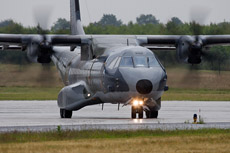
|
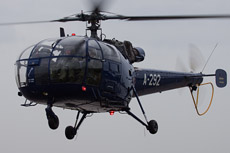
|
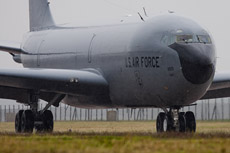
|
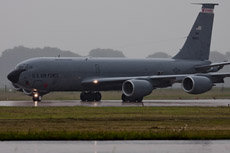
|
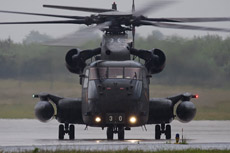
|
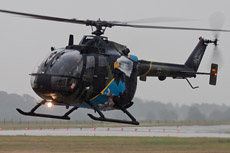
|
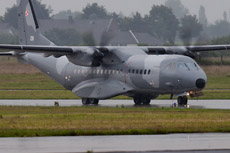
|
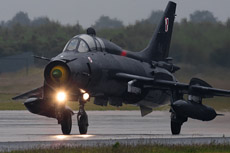
|
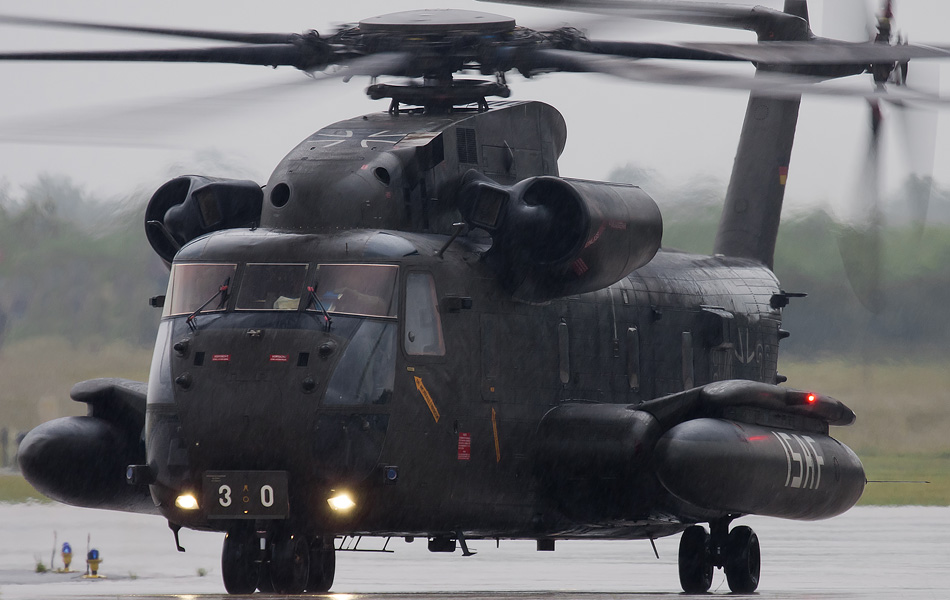
|
USAF was looking for a replacement for the outdated EC-121 in the 60s. The Boeing 707 was used as the basis for the
newly developed plane. A total of 2 companies were selected for the development of a radar system. These companies were
Westinghouse and Hughes. Both companies developed a radar system which was based on the pulse Doppler technology.
Westinghouse won the contract after an evaluation period. The first USAF E-3 entered operational service in March
1977. A total of 68 E-3s were built. The primary user of the E-3 is the USAF with 34 aircraft. The U.S. AWACS aircraft
are stationed at Tinker AFB, Oklahoma, Elmendorf AFB, Alaska and Kadena AB, Japan. The second major user is the NATO E-3
component at Geilenkirchen Air Base, Germany. The NATO purchased a total of 18 E-3 Sentry aircraft. The RAF has purchased
a total of 7 Sentry EAW Mk1 aircraft; these aircraft are stationed at RAF Waddington, England. The French Air Force has
4 E-3 Sentry aircraft in service. The French aircraft are stationed at Avord. The last E-3 user is Saudi Arabia. The Royal
Saudi Air Force has 5 E-3 aircraft in service which are stationed at Al Kharj Air Base. The E-3 Sentry played a crucial
role during Operation Desert Storm in 1991.
The weather today Geilenkirchen was dramatic. There was heavy rain from time to time. Conditions became a little bit
better in the afternoon. A small area at the head of the runway was reserved for the spotters for today’s spotter day.
It was an ideal location, because you could photograph the incoming planes from all the possible angles. The first
aircraft which came in was a Czech CN-295. The lighting of the Czech plane was very nice on photo due to the dark
weather conditions. A Dutch Allouette III of the Royal Netherlands Air Force arrived shortly after the arrival of the
Czech CN-295. A KC-135 Stratotanker was ready for departure in the meanwhile. This large aircraft taxied along the
public before it entered the runway. A German CH-53 landed on the runway after a nice fly-by. We suffered some heavy
showers during the arrival of this massive helicopter. The helicopter was from Rheine-Bentlage just like the Bo-105
Bölkow which arrived shortly after the CH-53. The Bölkow had a beautiful painting on its fuselage. The horse of the
German region of North Rhine-Westphalia was painted on the right side of the Bölkow and on its left side an eagle
which is the symbol of the unit. The Polish CN-295 entered the landing in the meanwhile. This was for us the trigger
that the Su-22 Fitter would arrive within 30 minutes. The black aircraft made a back track over the runway towards
the public after its landing.
A Norwegian Hercules entered the landing suddenly after a brief period of silence. Also a German C-160 Transall
arrived at the same moment at Geilenkirchen. A few German fighters appeared on the horizon after the landing of these
transport planes. A Tornado IDS, an F-4 Phantom and an EF2000 Eurofighter entered the circuit. The Tornado was from
AG-51 and was sprayed in the colors of this year’s Tiger Meet in Orland. All aircraft taxied along the audience and
capturing the planes on photo was easy. In the meanwhile, a Belgian F-16 and a German OV-10 bronco had landed. Also a
Greek F-16D had landed shortly after the previous arrivals. One of the NATO AWACS planes arrived from an operational
mission after the Greek F-16 arrival. This was one of my highlights today, because it was impossible to ignore the
E-3s at Geilenkirchen today. The arrival of the Danish F-16 was a great addition to the flight line. The Hungarian
An-26 made a few fly-bys along the public before it landed. The Turks were represented with 2 F-16s at Geilenkirchen.
Solo Turk and a second F-16 taxied also both along the crowd after their landing. The Historic Flight of the Dutch
Air Force was present with a DHC-2 Beaver and an AT-6 Harvard. The last participant which arrived was a C-130J-30
Hercules from Ramstein Air Base. The spotter day at Geilenkirchen was after all a successful day despite the bad weather.
|
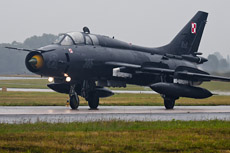
|
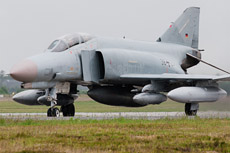
|
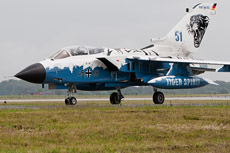
|
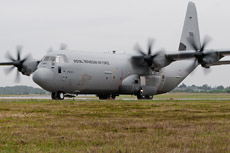
|
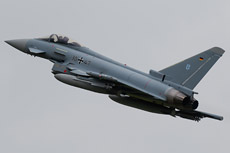
|
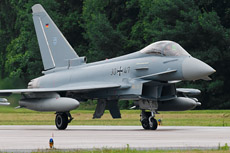
|
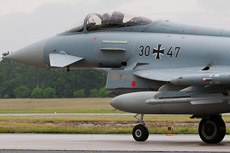
|
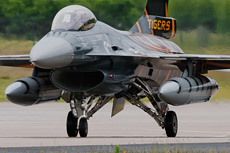
|
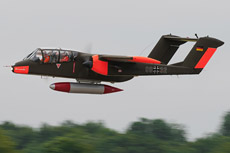
|
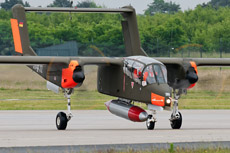
|
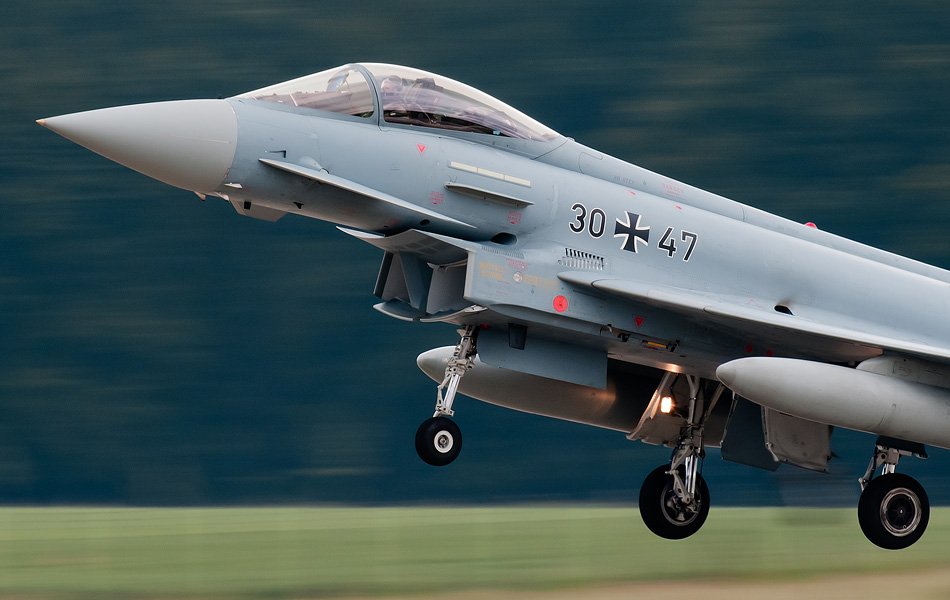
|
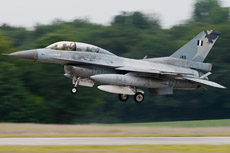
|
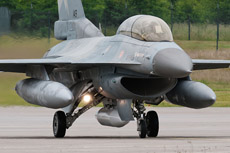
|
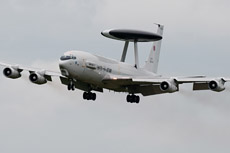
|
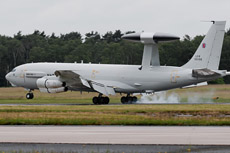
|
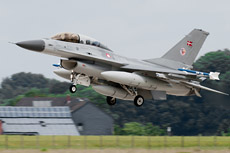
|
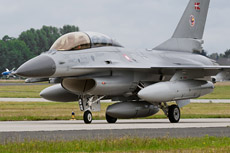
|
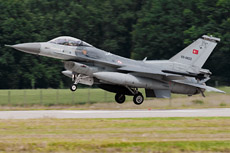
|
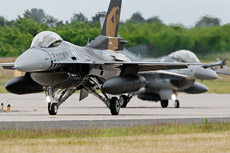
|
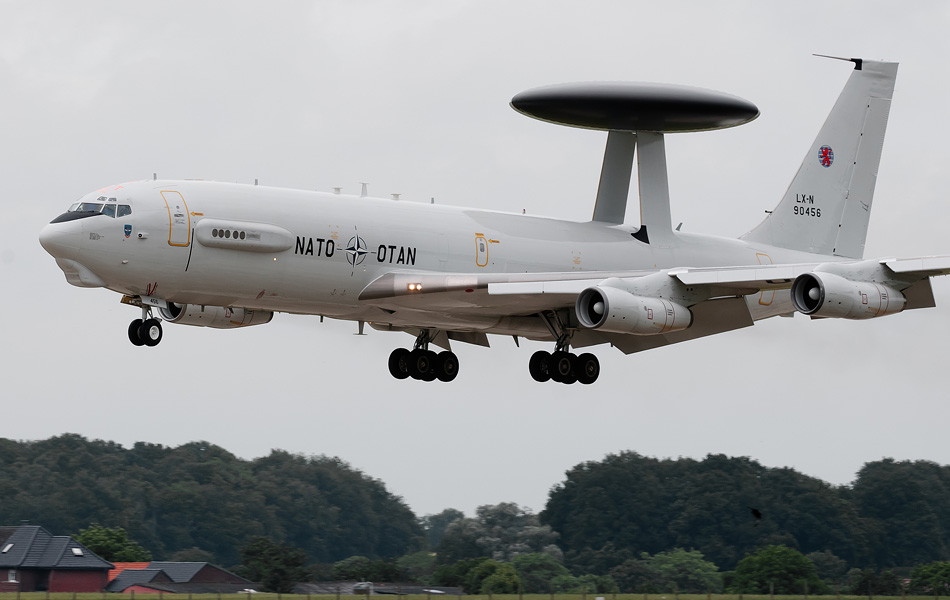
|
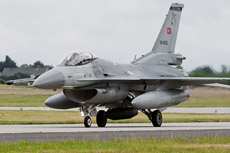
|
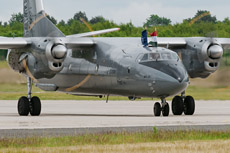
|
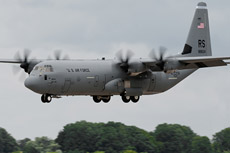
|
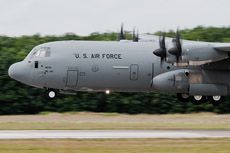
|
|
|

|







